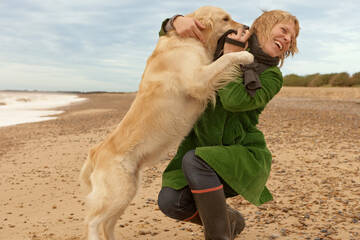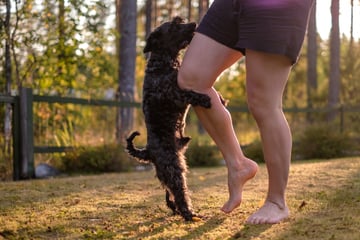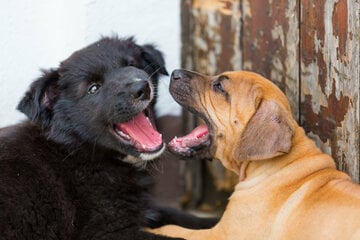Dog anxiety: What to do to help a stressed-out pooch
Some dogs are going to get a little anxious at times, for a variety of reasons. It's something that you should take seriously, so here's what causes dog anxiety, its symptoms, and what you can do to help.
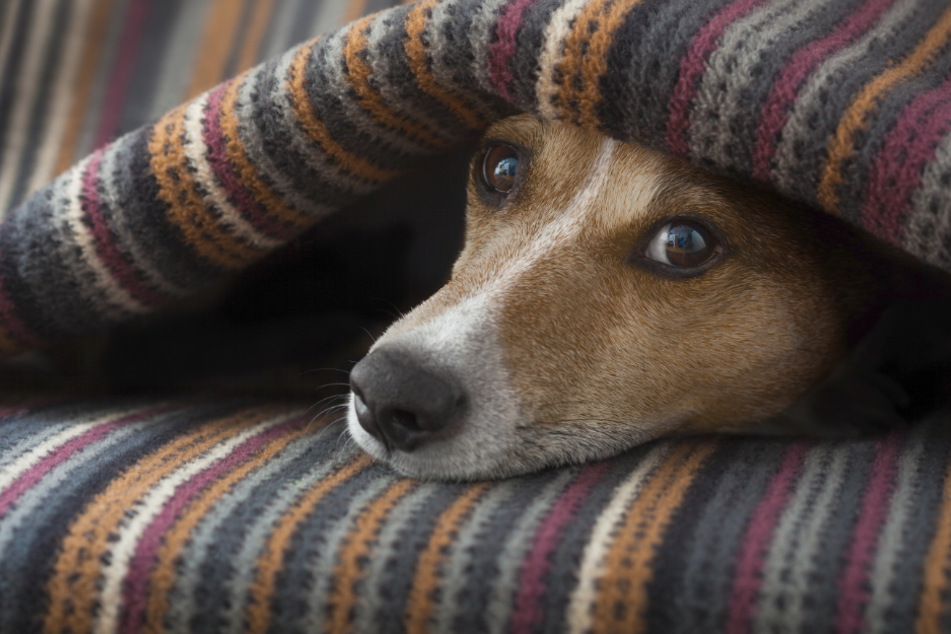
Dogs can be fearful fellows, especially if there's something loud or unexpected going on. If there's a loud car on the street, a fast bike in the park, or an airplane that's flying low, some canines will get worried. If this happens too often, your furry friend can even develop dog anxiety.
It can seem like something that came out of the blue. An excited dog owner might be looking for a nice cuddle, only to find their pooch curled up in a corner, looking shell shocked at every creak of the floor.
But what actually causes dog anxiety, and what are its symptoms?
Our dog guide has everything you need to know about this condition and – most importantly – how to treat it.
Why is my dog so scared of everything?
Dogs are not as confident as they may sometimes seem. In fact, they can be pretty neurotic animals, sometimes overreacting to everything around them. From too much excitement when their owner comes home – which can also be a symptom of separation anxiety – to the tendency to get freaked out by even the mildest of inconveniences, many dogs don't know the meaning of the world "chill."
That being said, when it comes to anxiety specifically, there are usually some very concrete explanations. Dogs are usually scared or worried about something in particular, so it's important to determine what exactly is making them anxious in the first place.
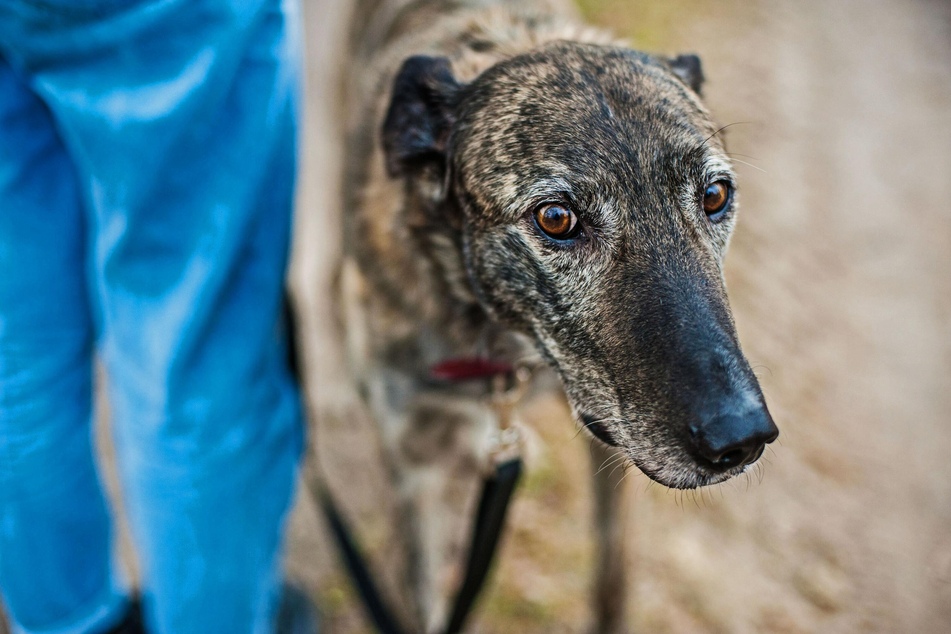
Understanding dog anxiety, stress, and fear
Every dog has its own individual character, a unique personality influenced by different things.
These are the key factors that influence a dog's personality:
- Hereditary factors
- Early childhood socialization
- Learned behavior
- Personal experiences
- Treatment by humans
In many ways, puppies are like human babies. And just like with babies, a dog's infancy is critical to their adulthood. If a dog grows up in a quiet and remote area, then it won't be used to the hustle and bustle of city life. In much the same way, if your pet is used to a busy urban setting, the quiet countryside might be a bit frightening.
In the same way that our parents affect our personalities, dog moms will transfer their fears and anxieties onto their pups. Whilst some dogs are certainly more insecure than others, no dog has a high tolerance for major changes, new noises, or unusual situations. They need to be taught and raised patiently if they are ever to get over these fears.
As a dog owner, your job is to provide security – or at least convey the illusion of it. It's never good to leave dog anxiety unchecked.
Anxious dogs are consistently insecure, they feel constantly threatened, and they find it difficult to calm down. This can lead to violent or unpredictable behavior, and needs to be addressed.
Dogs hate moving even more than you do
Moving houses is one of the most stressful things that a person can do. But however diabolically stressful you find it, it's nothing compared to its effects on a doggo who can't possibly understand what the hell's going on.
You see, dog anxiety is not always caused by some irrational fear. Instead, much the same as humans, dog anxiety can come from periods of high stress. Moving houses – especially moving abroad – is particularly stress-inducing.
This means that you need to be careful of dogs who have come from abroad, especially when adopting. They may have had traumatic experiences, or may have simply not been socialized well for the environment they are entering. As a result, you need to be sensitive to their needs.
Ultimately, you need to build up your dog's confidence after a stressful move or adoption. Take it slowly, get professional training, and give a lot of love.

Recognizing dog anxiety symptoms
There are a vast assortment of different symptoms exhibited by anxious dogs – and they're all very noticeable.
Through these symptoms of severe dog anxiety, you can recognize insecurity and fear in your pooch.
Signs of an anxious dog in its behavior
Fear is a basic emotion that is felt by all dogs and all humans at some point in their lives. Whilst each individual dog or human will react differently to this emotion, though, their response will always fit into one of these four different categories.
1) Flight
When dogs get scared, they will try to put distance between themselves and the source of their fear. Some dogs will move aside or hide behind their humans, others will literally tuck tail and run. If getting away isn't possible, your dog may bite the leash and exhibit unusually aggressive behavior.
2) Fight
Whether due to character or circumstances, some dogs will react to extreme stress violently. They might growl, snap, bite, and flog with full force. You can tell that your pooch is ready to attack if its eyes get watery, its pupil dilate, and it lays its ears back.
3) Freeze
While freezing is something lots of people can relate to, it has a slightly different meaning in dogs. Similar to the likes of cats, lizards and some types of birds, dogs may stand perfectly still in the hope they won't be noticed. You'll notice they won't respond to commands or even to food until whatever has caused their anxiety attack has passed.
4) Thoughtful play
Fearful dogs will ask their best pals to play with them. You might notice that, while playing with another dog, your pet stops for a moment, takes a look around to make sure danger isn't imminent, and then continues. They may also jump and run around a lot.
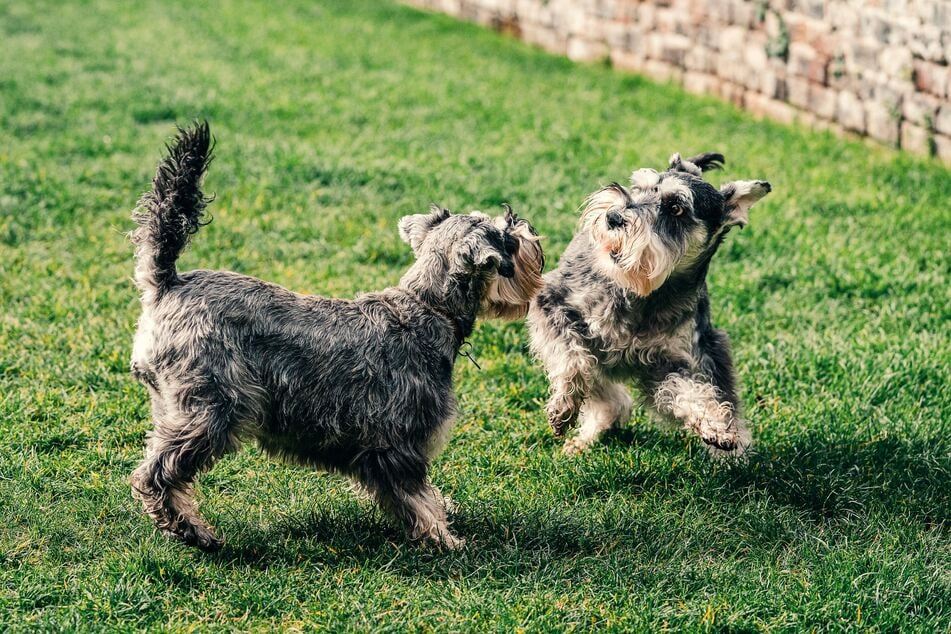
Body language dog anxiety symptoms
Anxiety in dogs can often lead to very specific body language symptoms. Just how extreme the dog's anxiety response is can be quite easily identified by simply observing how extreme these symptoms are coming across.
Body language symptoms of anxious dogs:
- Stiff posture
- Tail retracted or tucked between the hind legs
- Tucked and folded ears
- Neck sunken and retracted
- Folded limbs where possible
- Excessive panting and heavy breathing
- Severe trembling
- Head shaking
Dog anxiety should always be taken seriously. If left untreated or unaddressed, it can quickly degenerate into a legitimate disorder.
Symptoms of dog anxiety
There are many possible symptoms of dog anxiety, many of which we have already discussed. These are often rather similar to the symptoms of anxiety in humans, though, so keep that in mind.
Symptoms of dog anxiety include:
- Loss of appetite
- Apathy
- Sudden emptying of bowels and bladder
- Sweating (wet paw prints)
- Excessive licking of the paws
- Self-injurious behavior
- Hair loss
- Exaggerated jumping reaction
If you notice that your dog has been showing these symptoms for more than four weeks, you need to take it to the veterinarian. There might be anxiety disorder at play.
How to help a dog with anxiety
A dog who's suffering from anxiety and fear should never be ignored. Why? Well, because that will just make the whole situation worse. If a dog is afraid of one thing, and that is left unchecked, there's no guarantee that this anxiety isn't going to transfer onto other things.
Your response to a dog's anxiety should be based on the cause as well as the nature of its anxiety response. In addition, an owner should take into account the dog's training as well as its personality before attempting to help.
It could be that your powerful pooch will never be totally free of fear, and that's okay, but with practice and assistance you should be able to at least help them get through everyday life without suffering.
Fixing dog anxiety: finding out why
It is critical that you observe your dog closely to figure out exactly what is causing it to be anxious.
Here are some questions to ask yourself if you are trying to figure out why your dog is so anxious:
- Are there specific objects, people, or situations that frighten your dog? Have any appeared recently?
- Have there been any changes in your dog's life, such as new people, a different walking route, or even a change in your perfume?
- Has your dog always been fearful? Are there any links that this might have to possibly negative or traumatic experiences it may have had?
- How exactly does the dog react to its anxiety? Does it want to flee, does it want to shelter in place, does it attack or overreact?
- Is your dog always in this state of anxiety, or does the fear come in waves?
- How have you been behaving recently? Are you excited about something? Is there a difficult situation at home? Are you tense or stressed out? Could you be inadvertently putting these feelings onto your dog?
- How have you reacted to your dog's fearful or anxious behavior in the past?
- Where was the dog born and raised? Have you moved recently? Are there any environmental factors that could be causing this?
Understanding your dog's anxiety is critical for determining how you should go about fixing the problem, and how you can help the doggo. This can also assist in understanding how the dog needs to be trained in the future.
Keep in mind: You should have your pooch examined by a veterinarian if their anxiety has been going on for too long. The anxiety could also be caused by pain, hormonal imbalances, or other ailments that can only be treated by a vet.
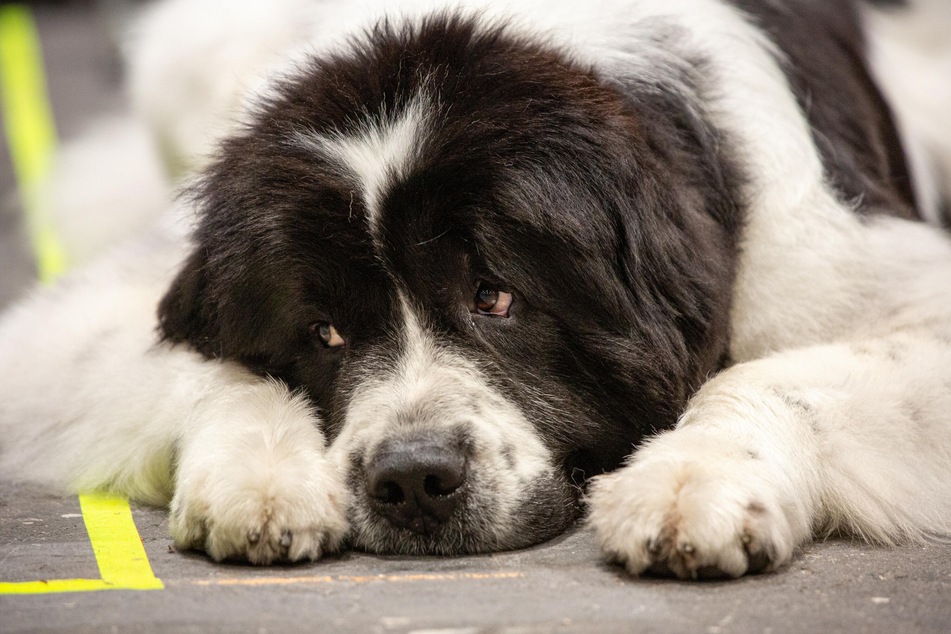
Help dog anxiety | What not to do
It's not just people who can get triggered. Dogs also find a number of behaviors triggering.
Here is a selection of behaviors that are generally unhelpful when dealing with an anxious and fearful dog:
- Exuding fear and insecurity yourself
- Comforting the dog excessively, petting it, and giving it too much attention
- Pressuring, overtaxing, scolding, hitting, or punishing the dog
- Confronting the dog directly with fear whilst it is on a short leash
- Tugging on the dog's leash and dragging or carrying the dog to the source of fear
- Cutting off the dog's escape route, harassing, or cornering the animal
- Scaring the dog on purpose, which can permanently damage trust
If you are truly unsure about how to behave around your anxious dog, or how to interact with it, then you should get help at a vet or a dog training school.
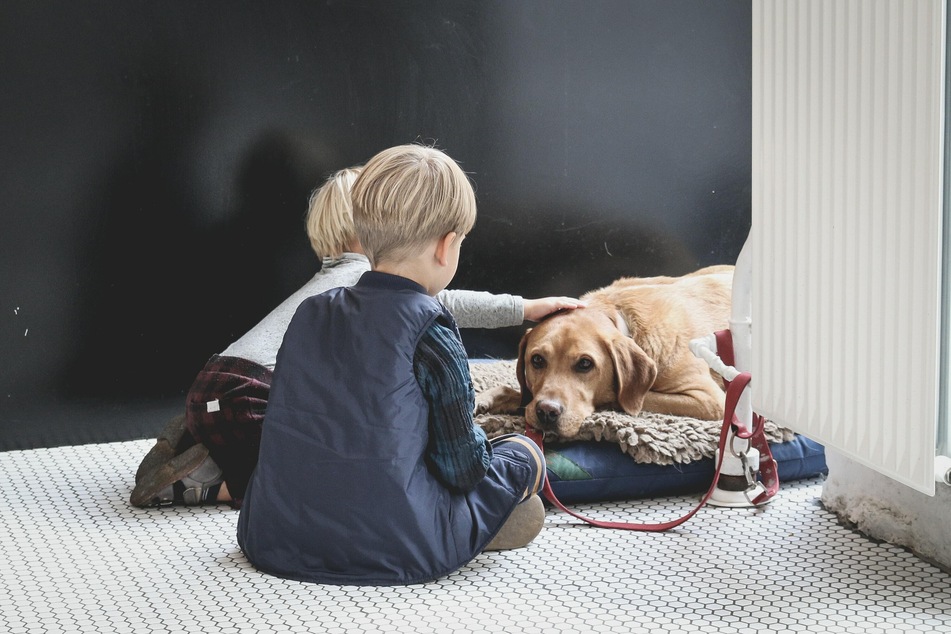
Fixing dog anxiety: training
Training is critical for helping a dog deal with anxiety because it gives them a sense of control and understanding of the world around them. If a dog is afraid of a certain object, person, or situation, then using patience training can actually turn the fear into something positive. Once desensitized, a dog may become accustomed to the fear trigger, therefore resolving that particular anxiety.
Let's give you an example of how to train your dog. Suppose that the dog is afraid of your hair dryer. Here's how you might proceed.
Step 1: Stop using your hair dryer in the presence of your dog. It may still be anxious at the sight of the thing, though, so you need to start with the physical distance between your dog and the hair dryer being quite large. Over time, bring it a little closer and, if your dog is calm, reward it.
Step 2: Now hold the hair dryer in your hand while you play with the dog or feed it. Allow the dog to sniff the device if it wants to. If it stays calms and shows no signs of fear, make sure to reward your brave pooch.
Step 3: Once you have got your dog used to having it around, turn on your hair dryer while you're in the dog's presence. Start with the lowest setting, in another room, and then gradually get closer to the dog. Then do the same for the medium and high settings. If your dog remains calm, reward it.
Noises can be easily integrated into a dog's daily routine, making the dog used to the noise and not fearful of certain devices, people, or places.
Keep these points in mind when training your dog:
- Your dog's responses should always set the pace.
- Always positively reinforce your dog's desired behavior.
- Do not punish your brave boy if something doesn't work.
- Be patient and take your time.
- Do not force the dog to do anything if it is freaking out.
Training your dog takes a long, long time, and there can be many setbacks along the way. It is worth the effort, though, and will improve the life of not only your dog, but also of you and your family.
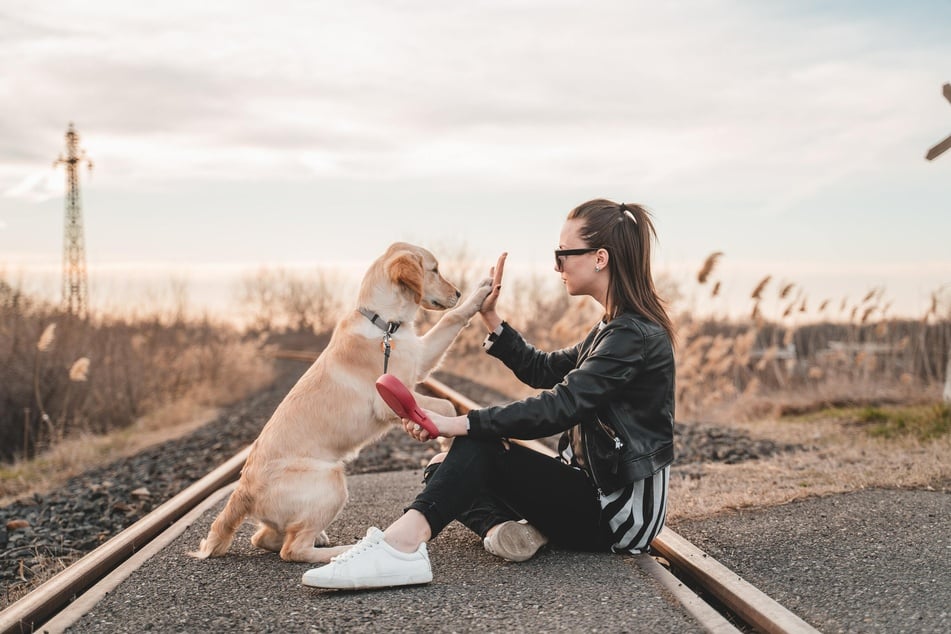
How to calm an anxious dog
So, finally, let's get to the crux of this article. How do you calm an anxious dog? Well, for starters, you need to recognize that in the eyes of your pup you are the leader of a pack. You are the dog's confidant, the rule setter, and you provide your pooch with orientation and security. Never betray this trust, and always act in a predictable and reliable way.
A daily structure is incredibly helpful for establishing clear boundaries and rules for your dog. Don't push your dog around or overburden it, but make sure that there is a concrete framework that establishes what is and isn't okay, how they should behave, and that you love and care for your pooch very deeply.
Your canine companion can't do whatever the hell it wants, that's just not how things work. It needs to understand this, but it also needs to trust you in everyday life, and trained to react appropriately if it finds itself in a difficult situation.
Make sure that you don't react too strongly to fear-inducing situation for your dog. This is important because your dog will recognize if something bad is happening by noticing that your body language and mood has changed.
Be aware of what your dog fears and interact calmly with those things that scare it. Make sure to treat them casually, and continue along with your everyday life.
Training a dog well and playing games with it will instill a sense of achievement and have a profoundly positive effect on its self-confidence. Through joint activities, the dog will release a bonding hormone known as oxytocin, and this will counteract with the stress hormone.
Hot Tip: To make your dog more confident and relaxed, make sure that its doggo-friends are also confident and relaxed, and try to keep your buddy away from insecure or fearful pooches.
What can you give a dog for anxiety?
If you feel like you need to support your pooch with medication as well as with kindness, compassion, and training, then you need to go to your veterinarian.
Common drugs that are prescribed to anxious dogs by veterinarians include the tranquilizer Acepromazine, the pheromone Adaptil, as well as various Amino Acids and other nutritional supplements. Each of these have a different effect on your pooch, and will help in various amounts.
Overall, though, it's absolutely crucial to see a veterinarian and get a prescription before using any medications or drugs to treat dog anxiety.
Summary of dog anxiety treatment
Dogs are afraid of all sorts of different things. From loud noises to weird smells to scary situations, it is not unusual for your dog to get a little anxious from time to time. Trouble comes when it begins to develop into a disorder. This is where you should step in.
Above all, keep in mind:
- Dog anxiety is normal and can be treated.
- It can be caused by many different things, and the first thing you need to do is identify what your dog is being triggered by.
- Dogs can display many different anxiety symptoms. You should learn to notice them.
- If you find that your dog has anxiety, you should first figure out why and then begin training it to normalize the stress.
- There are many ways to calm anxious dogs.
- You must take your dog to the veterinarian if things get seriously problematic, or if you feel that it needs medication.
Dogs are individualistic with their fears, meaning that the best thing you can do for them is identify what is making them anxious. With this knowledge, and possibly some professional help, your pooch will be back to normal in no time at all.
Cover photo: 123RF / Damedeeso


